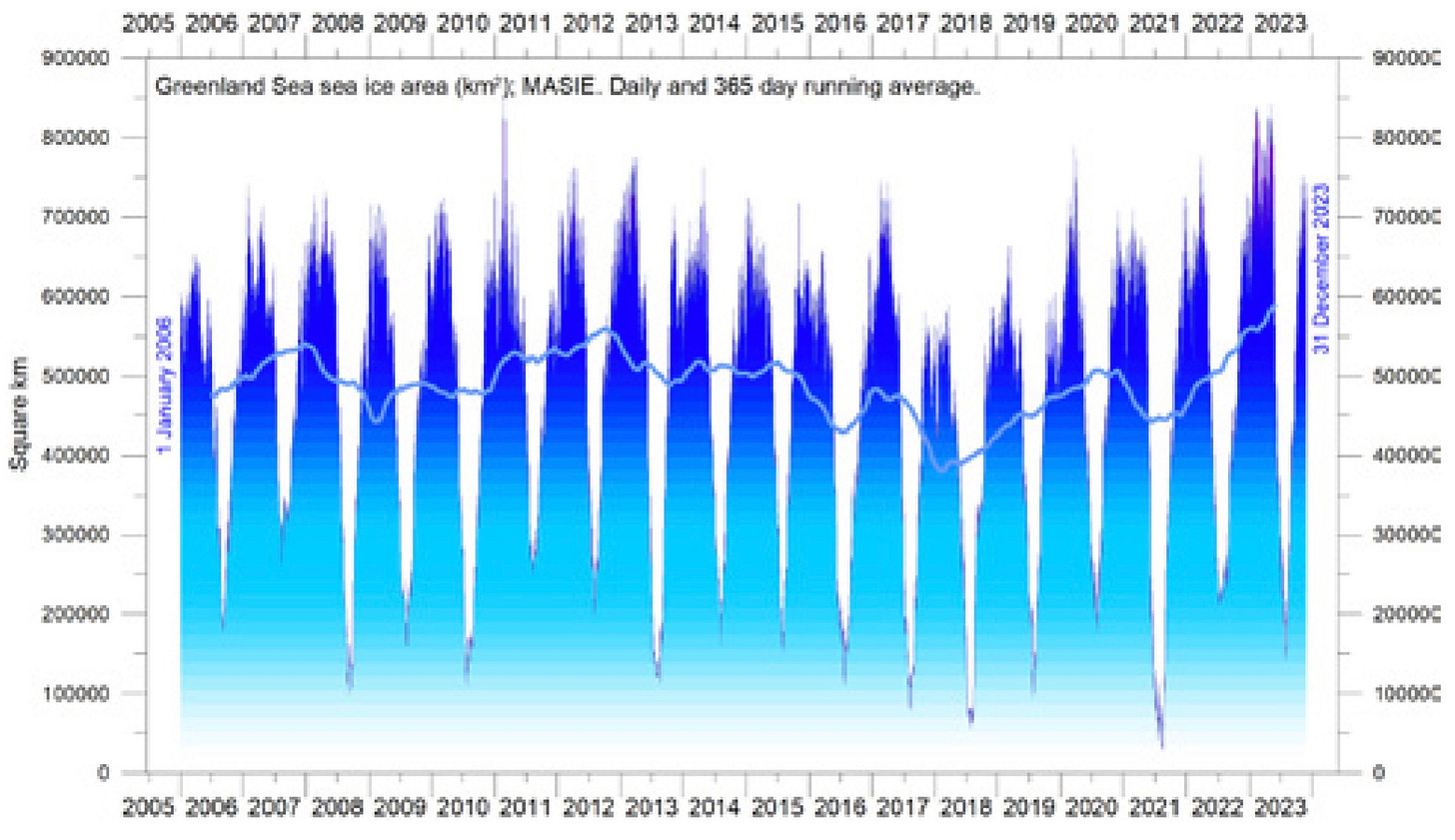There is an annual report of which I was not previously aware that provides just the facts on climate change. This year’s report is simply titled "The State of the Climate: 2023” and it is marvelous.
It is produced by Professor Ole Humlum of Svalbard, Norway. He is (per Wikipedia) a Danish professor emeritus at the University of Oslo, Department of Geosciences and adjunct professor of physical geography at the University Centre in Svalbard. His academic focus includes glacial and periglacial geomorphology and climatology.

His report is published by the Global Warming Policy Foundation (GWPF). Humlum lives above the Arctic Circle, incidentally, and says his data “is written for people wishing to form their own opinion on issues relating to climate.”
Humlum generally relies upon "publicly available observational datasets, and not on the output of numerical models,” which makes his information much more interesting. Here are some excerpts from his report (emphasis added):
The observational data presented here reveal a vast number of natural variations, some of which appear in more than one series. The existence of such natural climatic variations is not always fully acknowledged, and therefore generally not considered in contemporary climate conversations. The drivers of most of these climatic variations are not yet fully understood, but should represent an important focus for climatic research in future.
In this report, meteorological and climatic observations are described according to the following overall structure: atmosphere, oceans, sea level, sea ice, snow cover, precipitation, and storms…
Ten facts about the year 2023:
1. Air temperatures in 2023 were the highest on record (since 1850/1880/1979, according to the particular data series). Recent warming is not symmetrical, but is mainly seen in the Northern Hemisphere.
2. Arctic air temperatures have increased during the satellite era (since 1979), but Antarctic temperatures remain essentially stable.
3. Since 2004, globally, the upper 1900m of the oceans has seen net warming of about 0.037°C. The greatest warming (of about 0.2°C) is in the uppermost 100m, and mainly in regions near the Equator, where the greatest amount of solar radiation is received.
4. Since 2004, the northern oceans (55–65°N) have, on average, experienced a marked cooling down to 1400m depth, and slight warming below that). Over the same period, the southern oceans (55–65°S) have, on average, seen some warming at most depths (above 1900m), but mainly near the surface.
5. Sea level globally is increasing at about 3.4mm per year or more according to satellites, but only at 1–2mm per year according to coastal tide gauges. Local and regional sea-level changes usually deviate significantly from such global averages.
6. Global sea-ice extent remains well below the average for the satellite era (since 1979). Since 2018, however, it has remained quasi-stable, perhaps even exhibiting a small increase.
7. Global snow cover has remained essentially stable throughout the satellite era, although with important regional and seasonal variations.
8. Global precipitation varies from more than 3000mm per year in humid regions to almost nothing in deserts. Global average precipitation exhibits variations from one year to the next, and from decade to decade, but since 1901 there has been no clear overall trend.
9. Storms and hurricanes display variable frequency over time, but without any clear global trend towards higher or lower values.
10. Observations confirm the continuing long-term variability of average meteorological and oceanographic conditions, but do not support the notion of an ongoing climate crisis.
I like Humlum's style, which is Joe Friday all over again for those of you old enough to remember Dragnet. He includes 55 outstanding charts illustrating the facts as we know them. The data often varies by source, which is one of the reasons we know most of the story is unknown. This alone serves to dispel so much of the hype and scamming behind the Big Green Grift, but here is my personal favorite documenting the extent of Greenland sea ice:
To be fair, the one for the Canadian archipelago sea ice shows a trend slightly to the opposite, but that’s the point; there is no one overall pattern that suggests we're threatened, which brings us to Humlum's conclusion:
The global climate system is multifaceted, involving sun, planets, atmosphere, oceans, land, geological processes, biological life, and complex interactions between them. Many components and their mutual coupling are still not fully understood or perhaps not even recognised. Believing that one minor constituent of the atmosphere (CO2) controls nearly all aspects of climate is naïve and entirely unrealistic.
The global climate has remained in a quasi-stable condition within certain limits formillions of years, although with important variations playing out over periods ranging from years to centuries or more, but the global climate has never been in a fully stable state without change.
Modern observations show that this behaviour continues today; there is no evidence of a global climate crisis.
#Climate #Humlum #GWPF #StateoftheClimate #SeaIce #Greenland #ClimateCrisis






I agree with your assessment
Thanks for sharing this! I’m sure we all know what happens next when trying to present this in front of an Al Gore or a WEF henchman. Also, I have to hand it to this professor for being so bold to release this information because I don’t doubt that he was confronted at least once. I sincerely hope to see more people like him and articles/research like this.